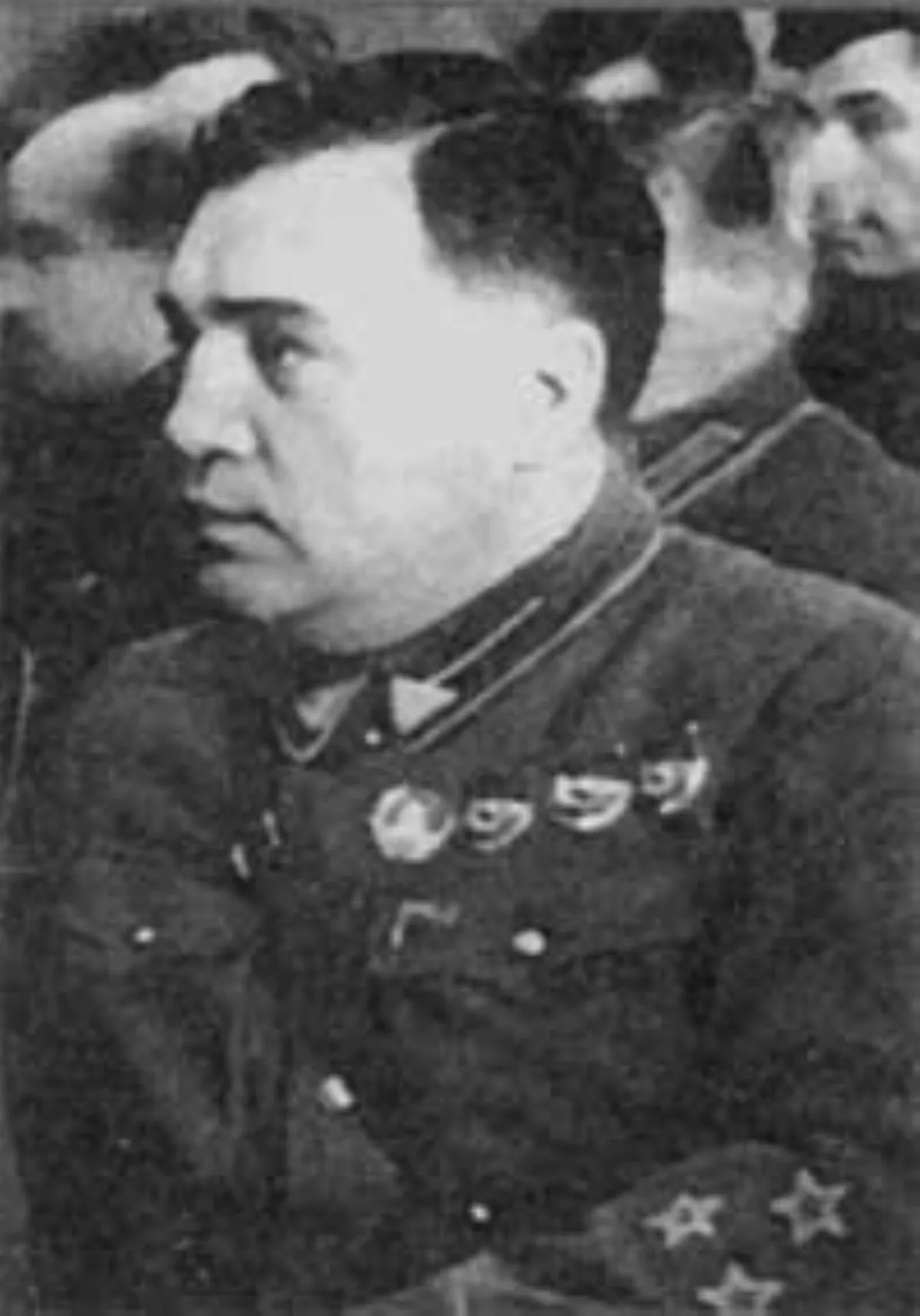 1.
1. Mikhail Petrovich Frinovsky was a Soviet secret police official who served as a deputy head of the NKVD under Nikolai Yezhov during the Great Purge.

 1.
1. Mikhail Petrovich Frinovsky was a Soviet secret police official who served as a deputy head of the NKVD under Nikolai Yezhov during the Great Purge.
Mikhail Frinovsky was actively involved in the Great Purge and personally led the mass arrests and executions of security and military officials across the Soviet Union from 1937 to 1938.
Mikhail Frinovsky was made People's Commissar of the Navy of the Soviet Union in 1938 when he was himself removed from power and purged along with Yezhov.
Mikhail Frinovsky was arrested in 1939 on conspiracy charges and executed in 1940.
Mikhail Petrovich Frinovsky was born 7 February 1898 in the village of Narovchat in the Penza Governorate of the Russian Empire, into a Russian family.
Mikhail Frinovsky's father was a teacher and he studied in a religious Orthodox school in Krasnoslobodsk prior to World War I In January 1916, Frinovsky volunteered for the Imperial Russian Army, serving as a sergeant in the cavalry until his desertion in August.
Mikhail Frinovsky subsequently joined an anarchist group and began working as an accountant at a military hospital.
Mikhail Frinovsky was severely wounded and spent months recovering at a hospital in Lefortovo.
Between March and July 1918, Mikhail Frinovsky again returned to civilian life and worked as a deputy administrator of the Hodynskaya Clinic.
Mikhail Frinovsky was made a commissar of a combat unit and head of the Special Section of the 1st Cavalry Army.
In 1919, Mikhail Frinovsky was transferred to the Cheka full time, and became a deputy of the Special Section for Moscow later in the year.
From December 1919 until April 1920, Mikhail Frinovsky served in the Special Section for the Southern Front of the Red Army.
In 1921, Mikhail Frinovsky was appointed the deputy of the Cheka of Ukraine.
From 1922 to 1923, Mikhail Frinovsky headed the Kiev division of the GPU, the successor to the Cheka.
In November 1923, Mikhail Frinovsky was transferred to the Northern Caucasus and given command of the OGPU's Special Section for the North Caucasus Military District.
Mikhail Frinovsky was made responsible for border security along the Black Sea coast in the region.
In July 1927, Mikhail Frinovsky was transferred to Moscow, this time as aide to the commander of the Special Section for the Moscow Military District.
On 1 September 1930, Mikhail Frinovsky was promoted and made chairman of the OGPU of the Azerbaijan SSR.
Mikhail Frinovsky was one of the major beneficiaries of the first purge of the NKVD that followed dismissal of its head, Genrikh Yagoda.
Mikhail Frinovsky had had some kind of falling out with Yagoda, but was on good terms with Yagoda's successor Nikolai Yezhov.
On 16 October 1936, Mikhail Frinovsky was appointed Deputy Chairman of the NKVD, which made him third in seniority within the Soviet security apparatus.
Mikhail Frinovsky was jointly responsible with Yezhov for setting the quotas of arrests that were required in each part of the Soviet Union, and in drawing up the 383 lists submitted for Stalin's approval, containing 44,000 names of people who were to be arrested, of whom 39,000 were to be executed.
On 7 June 1937, Mikhail Frinovsky led the squad of senior NKVD officers who descended on Kiev to facilitate arrest of the recently dismissed head of the Ukraine NKVD, Vsevolod Balitsky, and of Red Army officers suspected of being too closely linked to their former commander, Iona Yakir.
On 17 June 1938, Mikhail Frinovsky arrived in Khabarovsk in the Far East, in a special train carrying a large contingent of NKVD officers to supervise mass arrests of military and security personnel in the Far East.
Mikhail Frinovsky seized the opportunity to execute a group of former NKVD officers, including Leonid Zakovsky and Sergei Naumovich Mironov, to prevent them giving evidence against him to Beria.
On 8 September 1938, Mikhail Frinovsky was named People's Commissar for the Navy, and was sufficiently in favour to be among the guests at a lunch in the Kremlin on the 21st anniversary of the Bolshevik revolution, at which Stalin and Beria were present, but Yezhov was excluded.
On 4 February 1940, Mikhail Frinovsky was shot and executed by firing squad, and his body was cremated at the Donskoye Cemetery.
Mikhail Frinovsky was never politically rehabilitated after the death of Stalin in 1953 and the subsequent de-Stalinization process.